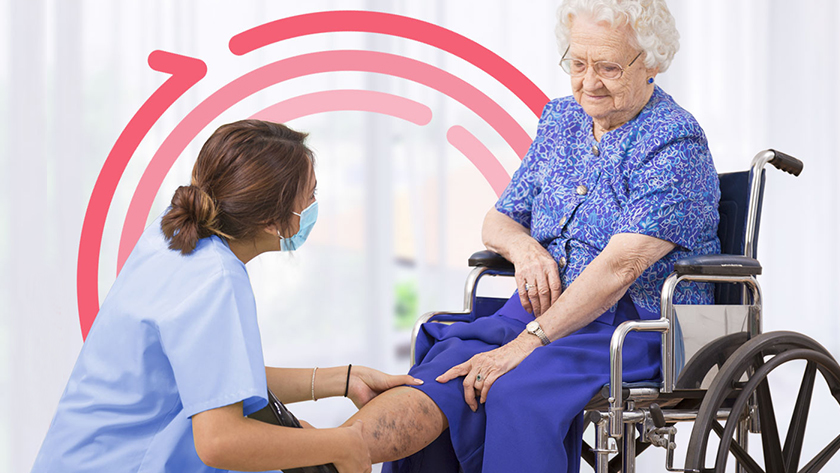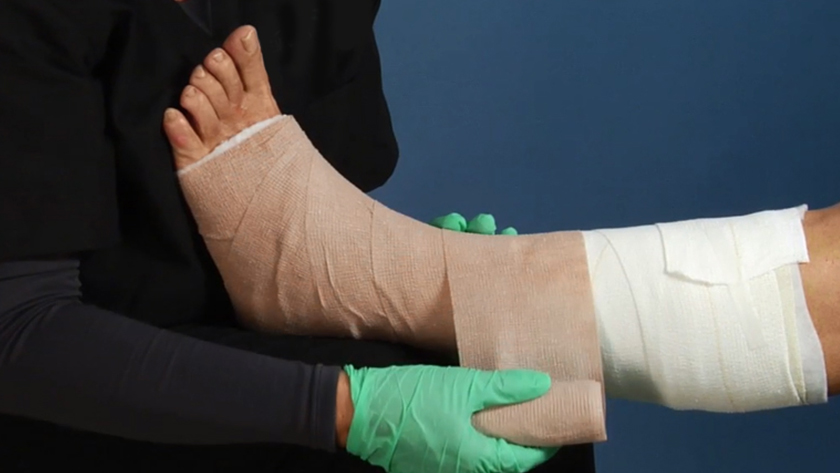Making your wound care center the hub of patient information
Discover how to coordinate care to help chronic wounds heal.

The pandemic has affected every aspect of healthcare, including your outpatient wound care centers. If your center closed in 2020, you weren’t alone. A survey by “Today’s Wound Clinic,” revealed that more than 40% of wound care practices were closed for at least part of 2020.¹ Stay-at-home policies, fear of transmission and other factors may have kept people away from wound care providers.
As people return to in-person healthcare visits, it’s important to examine the role your wound care clinic plays in chronic wound management. Here, we discuss challenges you may face when trying to integrate into the greater healthcare continuum—and specific ways you can help overcome those barriers.
View your clinic as a healthcare partner
In the past, outpatient wound centers were mostly siloed from other areas of healthcare, particularly hospitals. This separation created “a world where outpatient staff and inpatient wound care staff answered to two different organizations,” explains Melissa Bailey, President, Wound Care Advantage.
There’s now a greater trend to bringing outpatient wound care operations into hospital settings, while outsourcing some of the support and services. This model encourages stronger standardization and better integration of care.
“If organized correctly, a wound care clinic can be the hub of information for community providers,” Bailey says. This hub idea stems from the fact that people access the clinic from various places, whether the ER, family practice, hospital or skilled nursing facility.
However they reach you, patients and residents should be able to rely on the outpatient wound center as the focus of their wound care. They might not be able to visit the clinic on a regular basis, but “It’s here that coordination of care can happen,” Bailey says. “The wound center should be building relationships, advising and offering education where needed,” she stresses.
“If organized correctly, a wound care clinic can be the hub of information for community providers.”

Melissa Bailey
President, Wound Care Advantage
But sometimes it’s easier said than done.
Challenges to wound care clinic integration
When it comes to building relationships from your wound care center that lead to successful advising and educating, Bailey sees two main problems:
- Disconnected medical records. “If a wound care patient is discharged to home health or a skilled nursing facility, following that documentation of care can be difficult,” Bailey notes.
Solution: Seek out some of the more innovative technology platforms. Photographing wounds is one important step, while higher-tech options go a step further to help various health entities track and share wound care progress. - Increased popularity of freestanding wound care and hyperbaric programs. The problem isn’t with these facilities specifically. But they sometimes make it harder to overcome the first challenge. “The patient has now leaked out of the hospital system and into someone else’s care,” Bailey explains.
Solution: Although these unconnected facilities may provide great care, if you’re working in one, work on building relationships with other caregivers in your patient’s journey. Bailey emphasizes that you can help “make sure the communication and continuum loop doesn’t break.”
3 ways to strengthen clinic connections
As a clinician, you might not have control or even visibility into all the workings of your wound care center. But there are still some things you can do to help bolster its role in the care continuum. Bailey suggests three areas to focus on:
1
Share
Share your wound care expertise beyond the outpatient wound center. You’re the wound care expert. You see wounds every day, all day. That’s why your specialized experience and skills are so valuable to share with others.
Remember: Sharing your knowledge doesn’t mean you risk losing your edge. It means you spread wound care awareness and improve care across the board.
2
Connect
Connect the inpatient and outpatient wound care nursing staff when possible. Patients will be more likely to visit the outpatient wound center after discharge if they know they’ll see a familiar face.
Remember: Managing chronic wounds is an ongoing effort by clinicians and patients, so anything you can do to make it more palatable for patients is a win.
3
Collaborate
Collaborate with community agencies and providers. Communicate regularly with providers whose patients have been referred to you, and check in with your home health partners on a regular basis to coordinate care.
Remember: The more communication, the better chance of a successful outcome.
Improving wound care clinics with a personal touch
In addition to helping build connections among healthcare service providers, you can also make a difference from the ground up. Improvement comes through partnership. “The key is to envision your role as helping the hospital and community with wound care,” Bailey says. Here are 4 ways to start:
- Get to know the discharge planners.
- Educate inpatient nurses on wound care protocols and care.
- Help develop skin champions on hospital floors and communicate with those floor nurses frequently.
- Encourage outpatient wound care nurses to train new nurses on wound care, so relationships are built from day one.
Key takeaway
Wound care clinics are a vital part of a person’s journey to healing a chronic wound. People come to wound care centers from all kinds of care settings, so it’s important that your wound care center act as a hub. Bridging a person’s chronic wound care takes education, connection and communication across the continuum of care.
References:
- Cole, DPM, CWSP, W. (2021). A Look at the Impact of the COVID-19 Pandemic on Wound Care Practices One Year Later. Today’s Wound Clinic. Published. Available at https://www.hmpgloballearningnetwork.com/site/twc/articles/look-impact-covid-19-pandemic-wound-care-practices-one-year-later




